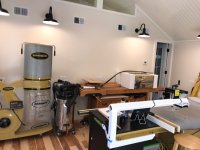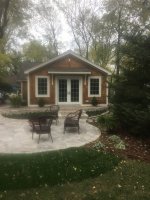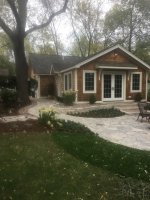Wooden nickel
Member
- Joined
- Aug 1, 2017
- Messages
- 29
Hey guys,
I am finishing my sys cabinets for the garage.
It is a concrete floor.
I have the little lip step up/ slab on one wall that is the “dry” area.
This is where the cabinets will go.
Question to anyone that can help;
I want to put a wood floor there in that section and want to know if
I put down plastic, treated sleepers, rigid foam in between and then plywood?
Or is it treated sleepers, rigid foam, then plastic, then plywood?
Also- when laying down the sleepers, should they be gapped from the wall sheathing or tied in directly to the bottom sill plate?
Or keep the entire floor gapped/ separates from the walls?
Any help is appreciated.
If it has any influence, I am in the Houston ( high humidity) climate.
But the shop is enclosed and air conditioned.
Thanks,
Scott
I am finishing my sys cabinets for the garage.
It is a concrete floor.
I have the little lip step up/ slab on one wall that is the “dry” area.
This is where the cabinets will go.
Question to anyone that can help;
I want to put a wood floor there in that section and want to know if
I put down plastic, treated sleepers, rigid foam in between and then plywood?
Or is it treated sleepers, rigid foam, then plastic, then plywood?
Also- when laying down the sleepers, should they be gapped from the wall sheathing or tied in directly to the bottom sill plate?
Or keep the entire floor gapped/ separates from the walls?
Any help is appreciated.
If it has any influence, I am in the Houston ( high humidity) climate.
But the shop is enclosed and air conditioned.
Thanks,
Scott




